Nicolas Pilia
Non-invasive Localization of the Ventricular Excitation Origin Without Patient-specific Geometries Using Deep Learning
Sep 16, 2022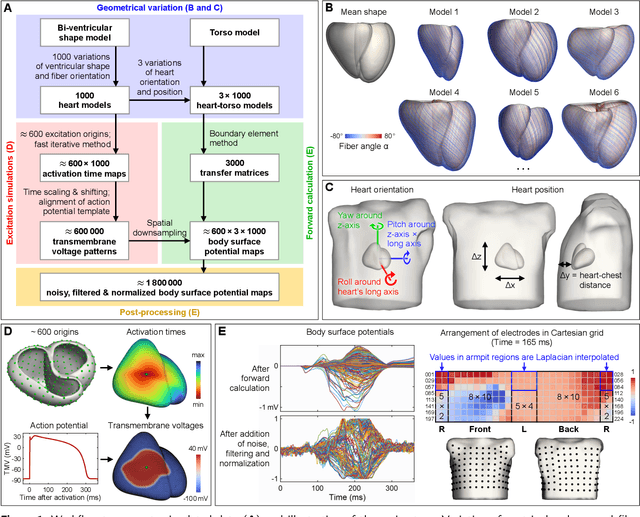

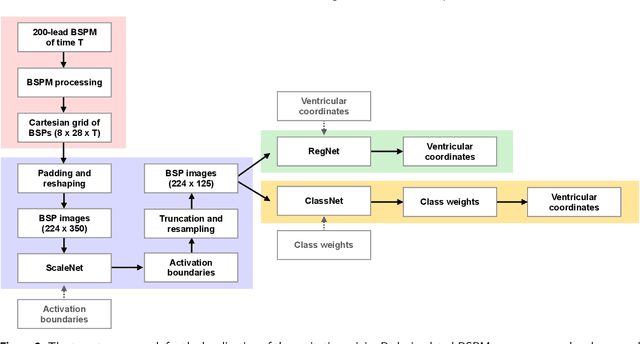
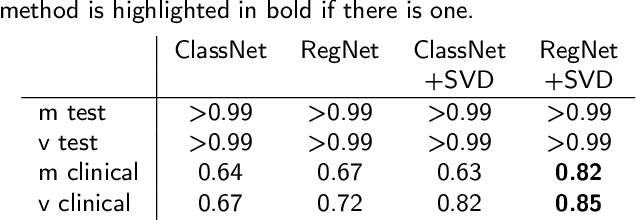
Abstract:Ventricular tachycardia (VT) can be one cause of sudden cardiac death affecting 4.25 million persons per year worldwide. A curative treatment is catheter ablation in order to inactivate the abnormally triggering regions. To facilitate and expedite the localization during the ablation procedure, we present two novel localization techniques based on convolutional neural networks (CNNs). In contrast to existing methods, e.g. using ECG imaging, our approaches were designed to be independent of the patient-specific geometries and directly applicable to surface ECG signals, while also delivering a binary transmural position. One method outputs ranked alternative solutions. Results can be visualized either on a generic or patient geometry. The CNNs were trained on a data set containing only simulated data and evaluated both on simulated and clinical test data. On simulated data, the median test error was below 3mm. The median localization error on the clinical data was as low as 32mm. The transmural position was correctly detected in up to 82% of all clinical cases. Using the ranked alternative solutions, the top-3 median error dropped to 20mm on clinical data. These results demonstrate a proof of principle to utilize CNNs to localize the activation source without the intrinsic need of patient-specific geometrical information. Furthermore, delivering multiple solutions can help the physician to find the real activation source amongst more than one possible locations. With further optimization, these methods have a high potential to speed up clinical interventions. Consequently they could decrease procedural risk and improve VT patients' outcomes.
Cobiveco: Consistent biventricular coordinates for precise and intuitive description of position in the heart -- with MATLAB implementation
Feb 04, 2021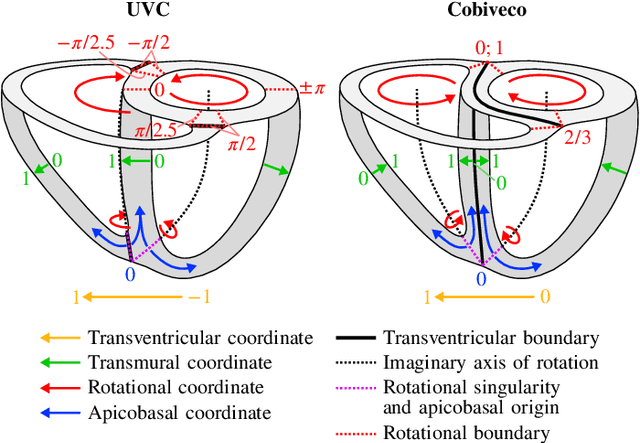
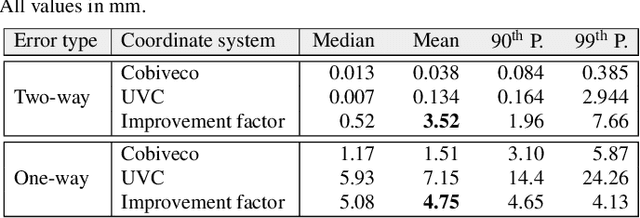
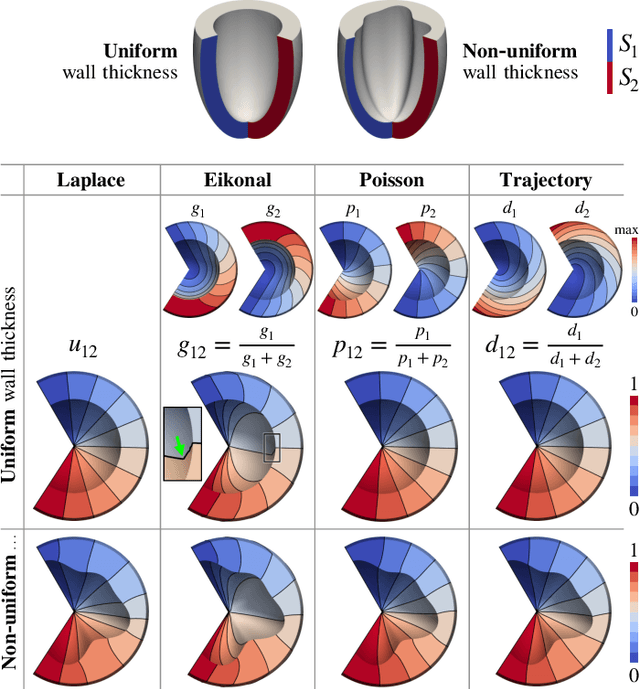
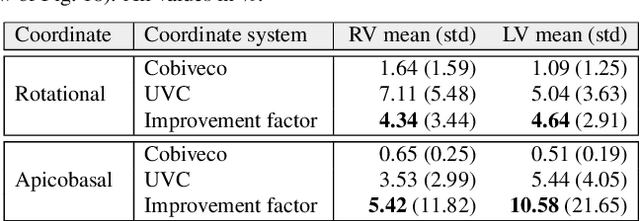
Abstract:Ventricular coordinates are widely used as a versatile tool for various applications that benefit from a description of local position within the heart. However, the practical usefulness of ventricular coordinates is determined by their ability to meet application-specific requirements. For regression-based estimation of biventricular position, for example, a consistent definition of coordinate directions in both ventricles is important. For the transfer of data between different hearts as another use case, the coordinate values are required to be consistent across different geometries. Existing ventricular coordinate systems do not meet these requirements. We first compare different approaches to compute coordinates and then present Cobiveco, a consistent and intuitive biventricular coordinate system to overcome these drawbacks. A novel one-way mapping error is introduced to assess the consistency of the coordinates. Evaluation of mapping and linearity errors on 36 patient geometries showed a more than 4-fold improvement compared to a state-of-the-art method. Finally, we show two application examples underlining the relevance for cardiac data processing. Cobiveco MATLAB code is available under a permissive open-source license.
 Add to Chrome
Add to Chrome Add to Firefox
Add to Firefox Add to Edge
Add to Edge